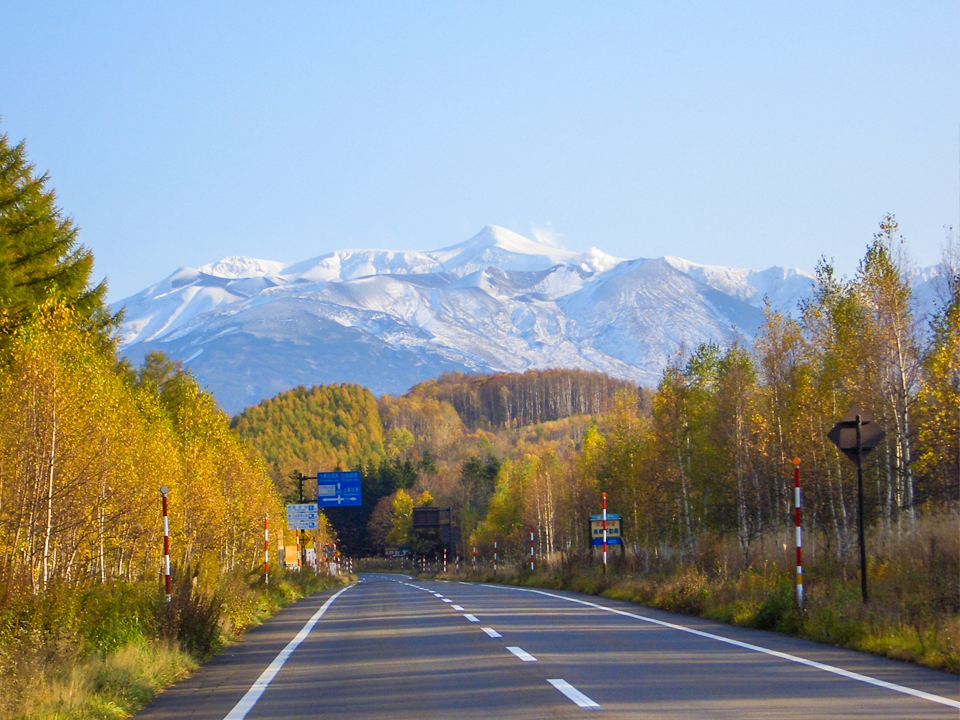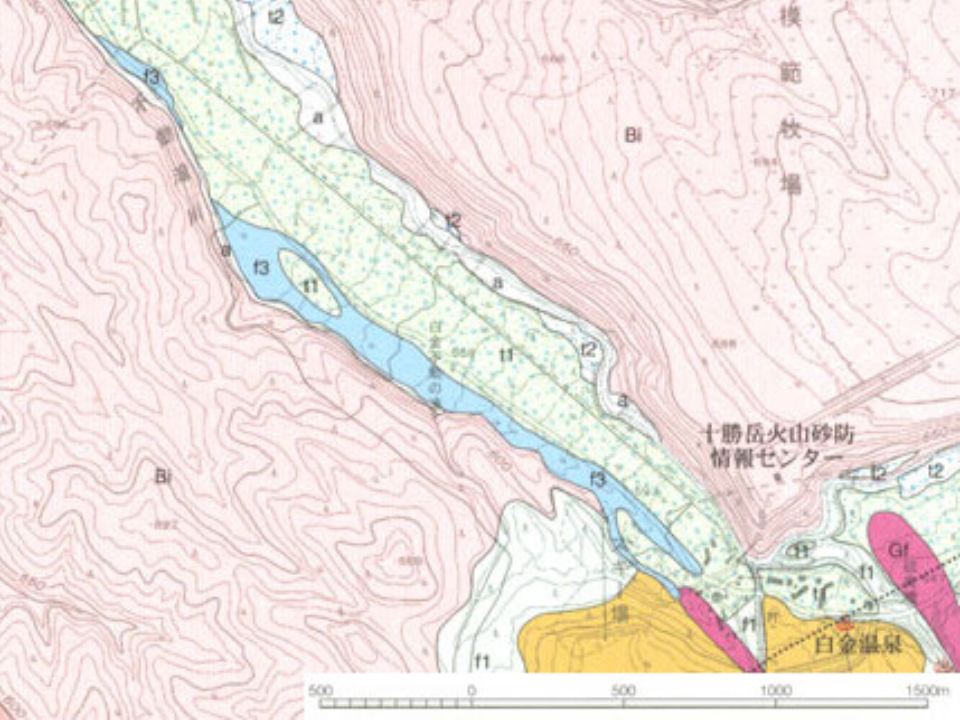
101
The Forests along the White Birch Road
On the road leading from the Biei Town center to Shirogane Hot Spring, many white birch trees (Betula platyphylla) and Erman’s birch trees (Betula ermanii) can be seen alongside the road. This is why the road is known as White Birch Road.
The road which passes alongside the Biei River is located at the spot where volcanic mud flowed from the 1926 Mt. Tokachidake eruption (known as the Taisho Mudflow).
All the vegetation alongside the river was destroyed, during this disaster.
The white birch is what is known as a pioneer species, because it can grow even when planted in such devastated land, where other species cannot survive.
Some trees can even be seen to have grown on the large boulders which rolled down with the volcanic mud.
However, the lifespan of the white birch is very short, at around 80 years, and so trees which have reached the end of their lifespan tend to fall.
Because conifer trees (Picea jezoensis, Abies sachalinensis, and Picea glehnii) have now started to be planted alongside the White Birch Road, it is thought that they will at some point develop into conifer forests.
Therefore, although it is currently known as ‘the beautiful White Birch Road,’ it is only natural that the surrounding plant life will change over time.
There is also evidence that some once-prominent plant life is recovering in the region. Perhaps it is better, then, to refrain from artificial alteration of the vegetation which could disrupt this process.
The road which passes alongside the Biei River is located at the spot where volcanic mud flowed from the 1926 Mt. Tokachidake eruption (known as the Taisho Mudflow).
All the vegetation alongside the river was destroyed, during this disaster.
The white birch is what is known as a pioneer species, because it can grow even when planted in such devastated land, where other species cannot survive.
Some trees can even be seen to have grown on the large boulders which rolled down with the volcanic mud.
However, the lifespan of the white birch is very short, at around 80 years, and so trees which have reached the end of their lifespan tend to fall.
Because conifer trees (Picea jezoensis, Abies sachalinensis, and Picea glehnii) have now started to be planted alongside the White Birch Road, it is thought that they will at some point develop into conifer forests.
Therefore, although it is currently known as ‘the beautiful White Birch Road,’ it is only natural that the surrounding plant life will change over time.
There is also evidence that some once-prominent plant life is recovering in the region. Perhaps it is better, then, to refrain from artificial alteration of the vegetation which could disrupt this process.


| Address | Biei town, Kamikawa county, Hokkaido. |
|---|---|
| Access | By Douhoku bus. Next to “Fudounotaki” bus stop. |
| Coordinates | 43.480717,142.626829 |
| Notice | Beware of pests |
| Entry | ○ |
| Public lavatory | × |
| Parking space | △ Parking on the streets |



















